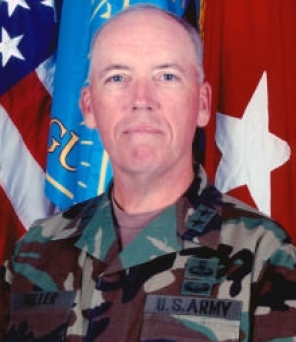
Geoffrey D. Miller is a retired United States Army major general who commanded the US detention facilities at Guantanamo Bay, Cuba, and Iraq. Detention facilities in Iraq under his command included Abu Ghraib prison, Camp Cropper, and Camp Bucca. He is noted for having trained soldiers in using torture, or "enhanced interrogation techniques" in US euphemism, and for carrying out the "First Special Interrogation Plan," signed by the Secretary of Defense, against a Guantanamo detainee.
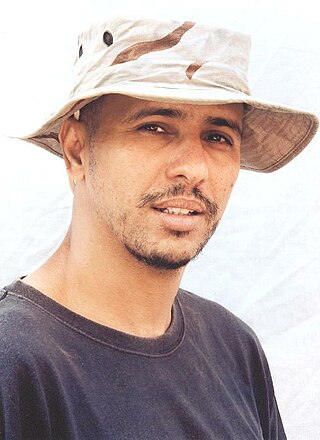
Mohamedou Ould Slahi is a Mauritanian citizen who was detained at Guantánamo Bay detention camp without charge from 2002 until his release on October 17, 2016.

Mustafa Ahmed Adam al-Hawsawi is a Saudi Arabian citizen. He is alleged to have acted as a key financial facilitator for the September 11 attacks in the United States.
Torture, the infliction of severe physical or psychological pain upon an individual to extract information or a confession, or as an illicit extrajudicial punishment, is prohibited by international law and is illegal in most countries. However, it is still used by many governments. The subject of this article is the use of torture since the adoption of the 1948 Universal Declaration of Human Rights (UDHR), which prohibited it.

Camp Delta is a permanent American detainment camp at Guantanamo Bay that replaced the temporary facilities of Camp X-Ray. Its first facilities were built between 27 February and mid-April 2002 by Navy Seabees, Marine Engineers, and workers from Halliburton subsidiary Kellogg, Brown and Root. It is composed of detention camps 1 through 6, Camp Platinum, Camp Iguana, the Guantanamo psychiatric ward, Camp Echo and Camp No. The prisoners, referred to as detainees, have uncertain rights due to their location not on American soil. There are allegations of torture and abuse of prisoners.

The Salt Pit and Cobalt were the code names of an isolated clandestine CIA black site prison and interrogation center outside Bagram Air Base in Afghanistan. It was located north of Kabul and was the location of a brick factory prior to the Afghanistan War. The CIA adapted it for extrajudicial detention.
Asif Iqbal is a British citizen who was held in extrajudicial detention as a terror suspect in the United States Guantanamo Bay detainment camps in Cuba from early 2002 to 9 March 2004.
Extrajudicial prisoners of the United States, in the context of the early twenty-first century War on Terrorism, refers to foreign nationals the United States detains outside of the legal process required within United States legal jurisdiction. In this context, the U.S. government is maintaining torture centers, called black sites, operated by both known and secret intelligence agencies. Such black sites were later confirmed by reports from journalists, investigations, and from men who had been imprisoned and tortured there, and later released after being tortured until the CIA was comfortable they had done nothing wrong, and had nothing to hide.
In military terminology, a black site is a location at which an unacknowledged black operation or black project is conducted. A 2021 Associated Press news story defined black sites as "clandestine jails where prisoners generally are not charged with a crime and have no legal recourse, with no bail or court order."
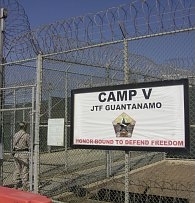
The Guantanamo Bay detention camp is a United States military prison within Guantanamo Bay Naval Base, also referred to as Gitmo, on the coast of Guantánamo Bay in Cuba. Of the roughly 780 people detained there since January 2002 when the military prison first opened after the September 11 attacks, 740 have been transferred elsewhere, 31 remain there, and 9 have died while in custody.

Muhammad Ali Abdallah Muhammad Bwazir is a citizen of Yemen, once held in extrajudicial detention in the United States Guantanamo Bay detainment camps, in Cuba. Bwazir's Guantanamo Internment Serial Number was 440. American intelligence analysts estimate he was born in 1980, in Hawra', Yemen.

Mohammed Ahmad Ghulam Rabbani is a citizen of Pakistan who was extrajudicially detained by the United States military at the Guantanamo Bay detention camp in Cuba from 2004 to 2023. He was never charged with a crime, was never tried, and was a subject of enhanced interrogation techniques.
Khaled Ben Mustafa is a citizen of France who was held in extrajudicial detention in the United States Guantanamo Bay detainment camps, in Cuba. The Department of Defense reports that Mustafa was born on January 9, 1972, in Lyon, France. His Guantanamo Internment Serial Number was 236.
Palestinian prisoners of Israel refers in this article to Palestinians imprisoned in Israel in the context of the Israeli–Palestinian conflict. The future of Palestinian prisoners detained by Israel is considered central to progress in the Israeli–Palestinian peace process. Cases of prison sentences include the charges of terrorism or being a member of an "illegal terrorist organization", such as Hamas or prior to the Oslo Accords the Palestine Liberation Organization, but according to some accounts also by political activism such as raising a Palestinian flag.
The Public Committee Against Torture in Israel is an Israeli NGO established in 1990 that monitors the use of torture and ill-treatment by Israeli security services against Palestinians under detention. PCATI was founded in 1990 in reaction to what it describes as "the ongoing policy of the Israeli government, which permitted the systematic use of torture and ill treatment in Shin Bet interrogations".
Camp No is an alleged secret detention and torture facility related to the United States detainment camps located in Guantánamo Bay, Cuba. On January 18, 2010, Scott Horton asserted in an article in Harper's Magazine, the result of a joint investigation with NBC News, that such a facility was maintained outside the regular boundaries of the Guantanamo Bay detention camps.
A number of incidents stemming from the September 11 attacks have raised questions about legality.
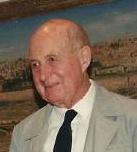
The Landau Commission was a three-man Commission set up by the Israeli Government in 1987 following a long-running scandal over the deaths of two Palestinian prisoners in custody and the wrongful conviction of a Circassian IDF officer. The Commission, headed by former Supreme Court Justice Moshe Landau, found that the GSS interrogators routinely used physical force during the interrogation of prisoners and then committed perjury at subsequent trials. In its conclusion, approved by Cabinet in November 1987, it lay down guidelines for the use of a "moderate measure of physical pressure". The details of the recommended methods were described in the classified appendix to the report. In 1994 the UN Committee Against Torture stated: "The Landau Commission Report, permitting as it does 'moderate physical pressure' as a lawful mode of interrogation, is completely unacceptable to this Committee."
The Guantánamo Bay files leak began on 24 April 2011, when WikiLeaks, along with The New York Times, NPR and The Guardian and other independent news organizations, began publishing 779 formerly secret documents relating to detainees at the United States' Guantánamo Bay detention camp established in 2002 after its invasion of Afghanistan in 2001. The documents consist of classified assessments, interviews, and internal memos about detainees, which were written by the Pentagon's Joint Task Force Guantanamo, headquartered at Guantanamo Bay Naval Base. The documents are marked "secret" and NOFORN.
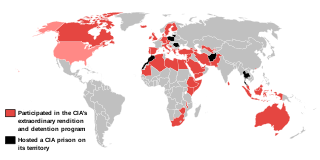
CIA black sites refer to the black sites that are controlled by the CIA and used by the U.S. government in its War on Terror to detain enemy combatants.










